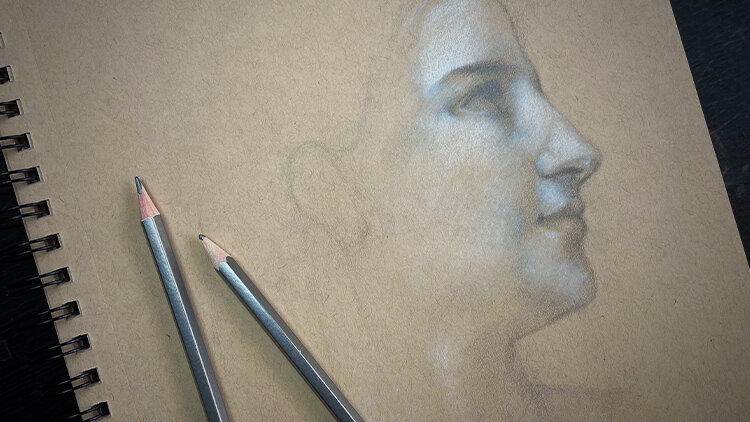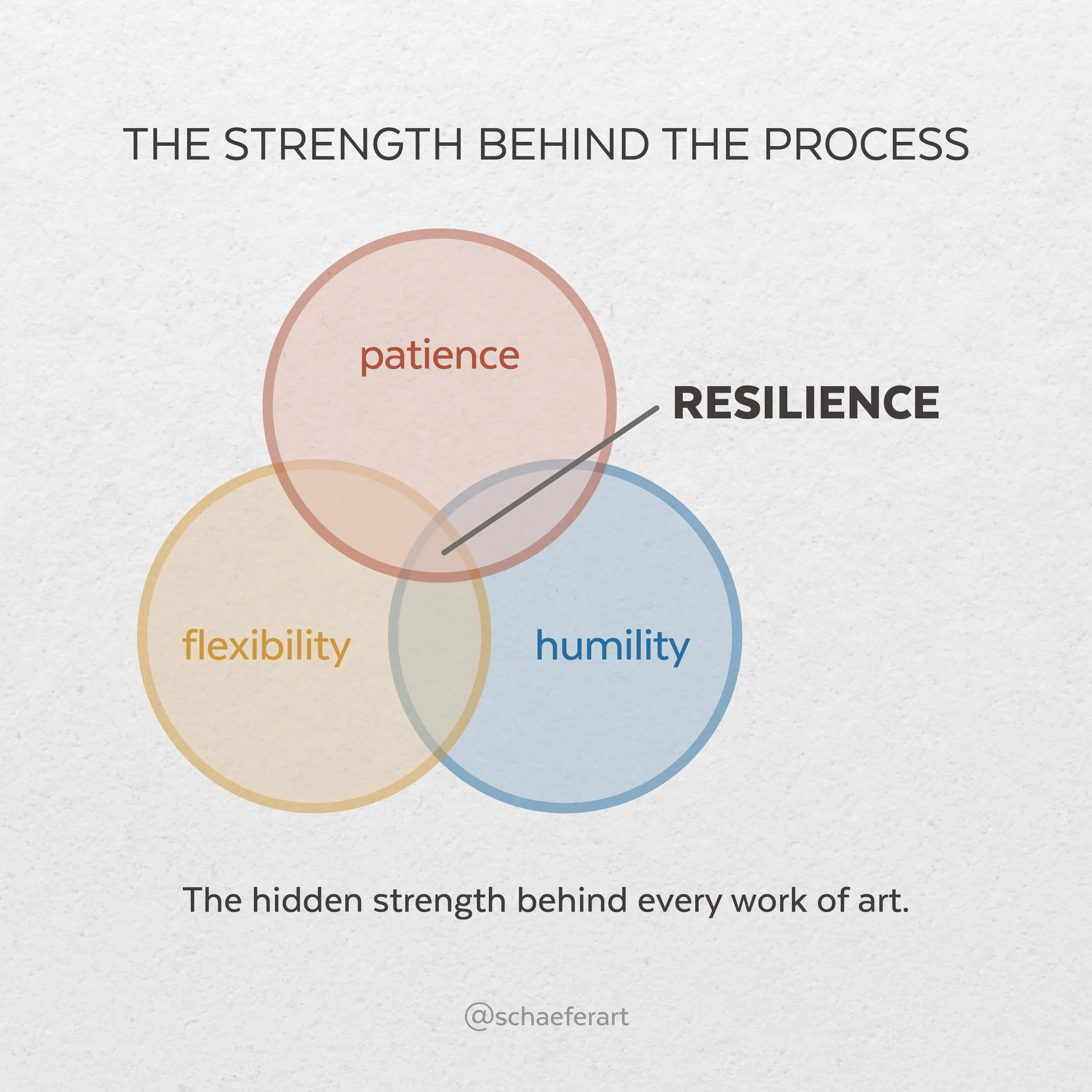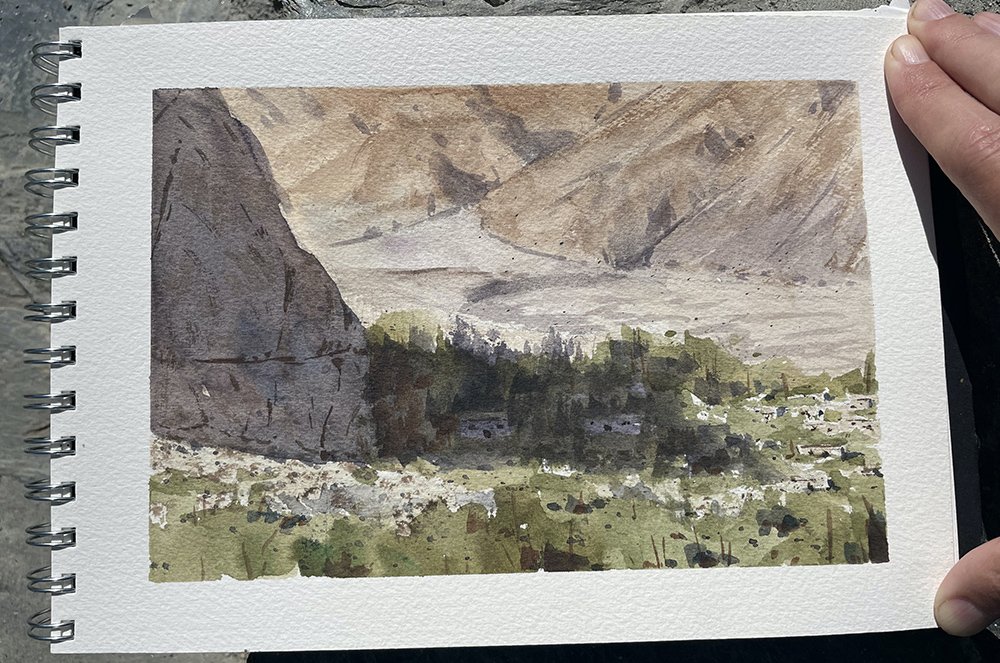What I Learned from Copying a John Singer Sargent Painting
Simplon Pass - 28 1/4" × 36 7/16" | John Singer Sargent [my photo from the National Gallery of Art - above]
At the end of May, I took a vacation out to the east coast to visit my family and while I was there I was able to go to Washington DC and check out the National Gallery of Art for the first time and saying it was amazing is an understatement. You can check out some footage I filmed while in the museum here: https://www.youtube.com/watch?v=YV7qwJzaZOQ
After returning home, my girlfriend decided she wanted a print of one of the Sargent paintings she fell in love with and saw at the museum, so we surfed the net and couldn't find any good prints of this painting unfortunately. I suggested that I could attempt to paint it since I had been wanting to paint something larger. This way, she gets what she wants to some extent and I get to learn from attempting to copy a Sargent - win-win situation.
I decided to do this painting on a 24" x 36" canvas, which is the closest I had laying around to the original which was 28 1/4" × 36 7/16". Due to this, the proportions are slightly distorted with my copy when compared to the original but in the end, I'm okay with that.
Above: Color palette I used for this painting - Titanium White, Cadmium Yellow Lemon, Cadmium Red Medium, Ultramarine Blue, Burnt Umber, Transparent Earth Red, Alizarin Crimson, Viridian, Cobalt Blue - Gamblin Artist Oil Colors
What I Learned
Each time I do a painting I tend to learn something I didn't know before or I end up re-learning a valuable lesson I learned a few months ago from a different painting.
Drawing is Crucial in the First Stages of a Painting - In the beginning, I simply estimated many of the lines and thought they looked close enough for a block-in, but as the painting progressed, I could tell some of these were way off. From that point on, I spent 60-70% of the painting process reworking and fixing the drawing of the entire scene. This was a nightmare - lesson [re]learned.
Painting Large is much Different than Painting Small - For probably 80% of the time, I work on smaller paintings - 6x8's, 8x10's, 9x12's, etc. Jumping into a painting this size with no preparation was a huge task and most likely a mistake. If I were to do it again, I would start out by doing a small, rough study at least 12" x 16" of the painting to get my bearings on the color and overall scene. Working with these smaller studies first usually allows me to plan ahead and develop a better understanding for how to approach a painting this large.
Color & Variety are Important for a Natural Look - Especially for this painting, Sargent used a great deal of colors and variety throughout the entire scene and this, along with the value structure gives it so much life. It looks quite natural and real. I remember seeing this one in the museum and just being blown away by it. My version is much less spectacular and masterful than his but I must say I surprised myself by achieving as much as I did with this painting study.
Patience is Needed to Create Something Great - I spent many hours working on this large painting over several painting sessions over many days. It amazes me that Sargent was able to achieve such a painterly feel to the entire painting, and having painted it myself - I don't think there's any way he could have painted it all in one session. My version lacks the texture and paint application that he was able to do and I think it is incredible. I have read somewhere that when Sargent would work on his paintings, the last strokes he would put in were the boldest ones. This makes sense to me and would explain how he was able to achieve such a fresh look to most of his paintings. If he painted too precise or detailed, he could simplify an area with one or a few brush strokes to explain what was happening - for example, he would usually do this with fabric on a couch or a woman's dress. But anyway, working on this painting reminded me to never rush a good thing - I don't always remember that, but I do my best in each moment.
It's Possible to Do Things I Thought Weren't Possible - Before I started working on this painting, I didn't believe I could do it. The painting seemed so complex and way out of my league to even begin to try to copy. But I started anyway. I told myself that no matter how long it takes, even if I have to throw away this canvas and buy a new one, I would keep working on this painting until I got it to a point where I was happy with it. And I did just that. My copy may not be perfect and I know it isn't, but my goal wasn't about perfection. It wasn't about mimicking Sargent's every brushstroke on a microscopic level. To me it was about attempting something I didn't think was possible, and following through with it and doing my absolute best.
Simplon Pass Copy - 24" x 36" | My version of Sargent's painting

I am an artist, writer, and instructor. As a previous graphic designer for a healthcare management business, I now teach drawing, painting, and discovering your passion with art.
When You’re Ready, Here’s How I Can Help You:

Unlock your artistic potential and learn to draw with confidence using the Intuitive Drawing method. From your first sketch to creating realistic drawings and subjects.















